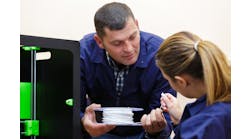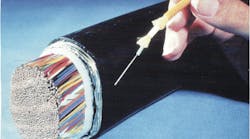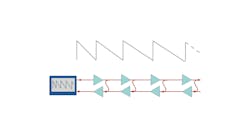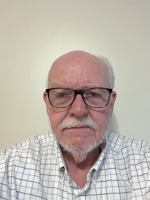How Magicians (I.E., Sharp Engineers) Create Magic Solutions
"Any sufficiently advanced technology is indistinguishable from magic."
Arthur C. Clarke, Profiles of the Future: An Inquiry into the Limits of the Possible, 1961
Arthur C. Clarke, the science fiction author who wrote “2001: A Space Odyssey” was not just a writer of fiction, he was a futurist. In his stories, he predicted many things about the future including communications satellites, home computers and the Internet. I am a big fan of Clarke’s, especially the quote above which I often use when speaking to non-technical groups about fiber optic communications. It also tells the reason why I am passionate about fiber optic education!
“The challenge is that OTDRs require bidirectional transmission; thus, the fiber amp becomes a roadblock. Thankfully, some magician, er sharp engineer, came up with a solution. Couple the return signal into another fiber in the cable that transmits in the opposite direction. And just like magic, a pair of simple passive splitters at the location of the fiber amps allows the two amps to work in concert.”
Over the years, we’ve watched fiber optic technology’s “magic” develop to include wavelength division multiplexing, passive optical networks and now terabit speeds.
But nothing seems as magical as coherent technology. Most fiber optic transmission has been based on direct modulation of a light source as a transmitter and simple conversion to electrical signals in a receiver. The limitation of this approach has been bandwidth—how fast you can modulate a laser or how fast you can build a receiver. That method has typically been hitting a speed limit at 25-50 gigabits per second and distance limits of tens or maybe hundreds of kilometers. To reach faster data speeds, we use multiple transmitters and wavelength division multiplexing. Fiber amplifiers are used as repeaters to get longer distances. (See Figure 2.)
Coherent transmission systems use some powerful magic to gain at least another factor of 10 in performance. Coherent transmitters are the least complex to understand; they don’t modulate lasers at all, they turn the laser on all the time and modulate it in several modes with an external device that is much faster. Coherent receivers are truly complex gadgets that use a local laser mixed into the received signal and a powerful digital signal processing system to extract the communications signal. Real magic.
Coherent systems are capable of terabit speeds and thousands of kilometers in link distance. Since they were first introduced as very expensive printed circuit boards full of components about 15 years ago, they have become smaller, even reduced to pluggable transceiver modules. Most importantly, they cost much less. In fact, the cost is such that they are being touted for short high-speed links in data centers and to create passive optical networks (PONs) running at 100G serving a thousand users. Real magic.
Recently, a reader asked me if I knew what a C-OTDR was. I discovered that a C-OTDR is a coherent OTDR. It did not take long to find out that the advantage of coherent transceivers has not been overlooked by at least one test equipment company. OTDRs are always trying to reach longer ranges and greater distance resolution, so coherent transceivers seem to be a natural solution.
The problem this coherent OTDR is targeted to solve is testing transoceanic cables. Its distance capability is just what is needed. They also solve a roadblock on these systems. These very long-distance networks use fiber amplifiers to regenerate signals and fiber amps, block signals going in the opposite direction to transmission.
The challenge is that OTDRs require bidirectional transmission; thus, the fiber amp becomes a roadblock. Thankfully, some magician, er sharp engineer, came up with a solution. Couple the return signal into another fiber in the cable that transmits in the opposite direction. And just like magic, a pair of simple passive splitters at the location of the fiber amps allows the two amps to work in concert. They amplify the OTDR test pulse in one direction and amplify the backscatter signal in the other direction. (See Figure 3.)
The coherent OTDR for these submarine networks no longer has a single test port; it has separate transmitter and receiver ports and of course gains an additional 3 dB from the elimination of the splitter normally used in the OTDR. And the trace becomes a “sawtooth” trace, showing individual OTDR traces for each link between amplifiers. Now it’s possible to test and troubleshoot transoceanic cables with an OTDR.
Once again, the magical minds of engineers solve another fiber optic problem.








